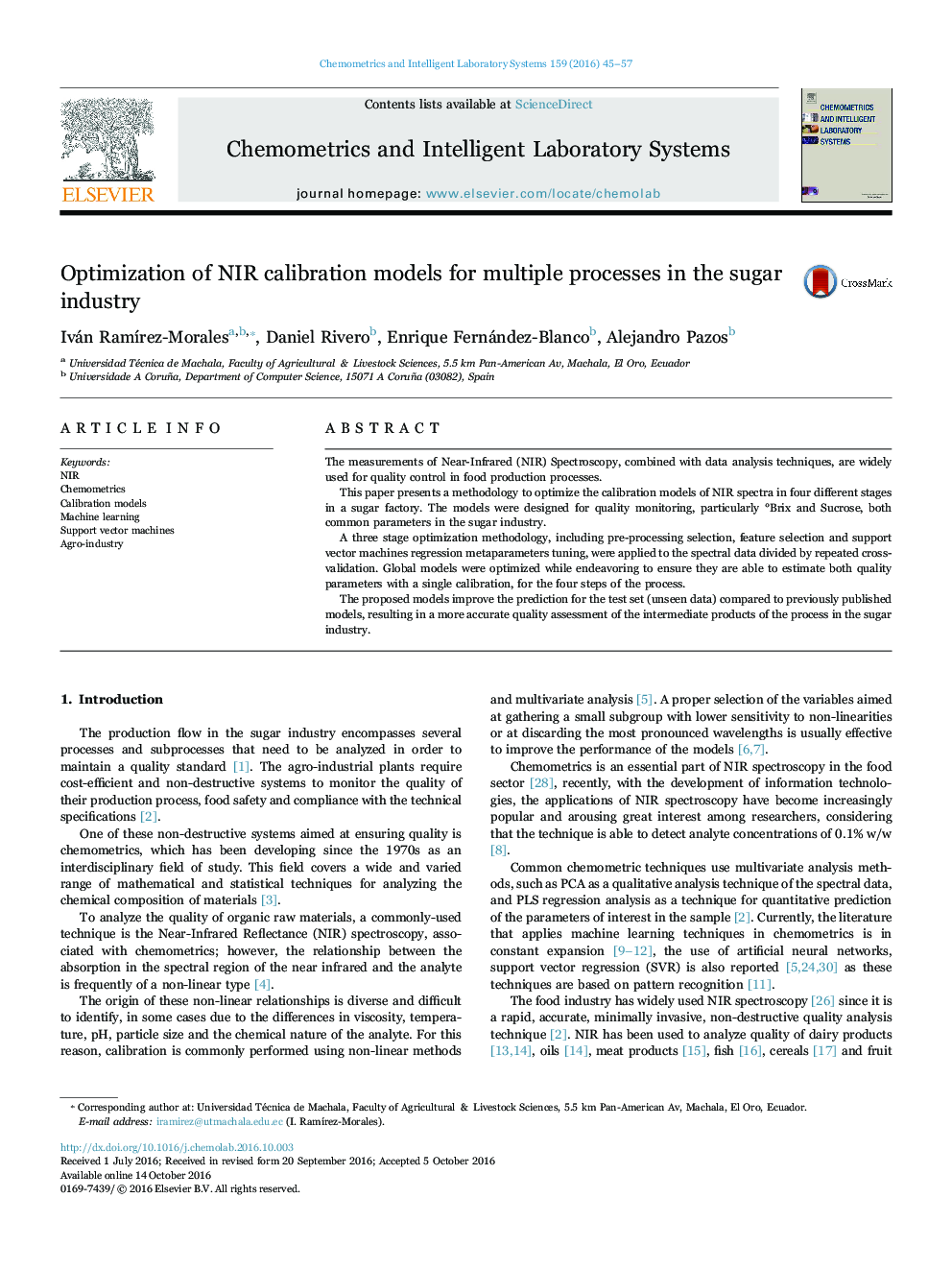| Article ID | Journal | Published Year | Pages | File Type |
|---|---|---|---|---|
| 5132351 | Chemometrics and Intelligent Laboratory Systems | 2016 | 13 Pages |
â¢Single calibration models for multiple process in the sugar industry were developed.â¢Feature selection techniques and Support Vector Regression were used to develop the models.â¢A total of 1797 NIR spectra ranging between 400.0 nm and 1888 nm, were analyzed.â¢The proposed models for Brix and Sucrose performed better in test set data compared to those published.â¢A R-squared of 0.99 and a RMSE of 0.305 were achieved for °Brix model. A R-squared of 0.99, RMSE of 0.486 for were achieved for Sucrose model.
The measurements of Near-Infrared (NIR) Spectroscopy, combined with data analysis techniques, are widely used for quality control in food production processes.This paper presents a methodology to optimize the calibration models of NIR spectra in four different stages in a sugar factory. The models were designed for quality monitoring, particularly °Brix and Sucrose, both common parameters in the sugar industry.A three stage optimization methodology, including pre-processing selection, feature selection and support vector machines regression metaparameters tuning, were applied to the spectral data divided by repeated cross-validation. Global models were optimized while endeavoring to ensure they are able to estimate both quality parameters with a single calibration, for the four steps of the process.The proposed models improve the prediction for the test set (unseen data) compared to previously published models, resulting in a more accurate quality assessment of the intermediate products of the process in the sugar industry.
